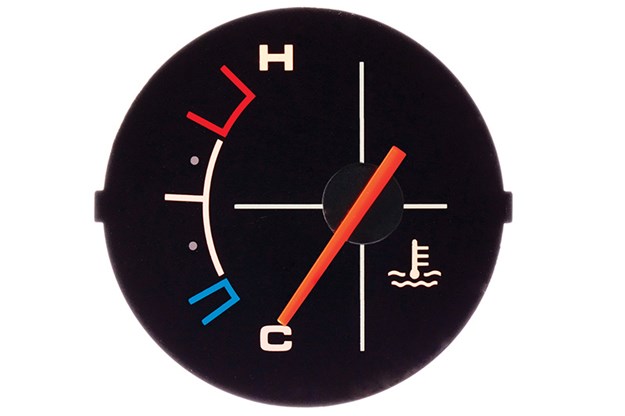Warming up your engine - Blackbourn 440



|
Warming up your engine properly is a waiting game. Or maybe it's not
When Mick McCrudden’s ‘Warm Up’ column popped up in the last issue it was just that little bit spooky because at about the same time my locked-down mates and I were debating the question by email.
Rob van Driesum was looking for a response from the crew to a quote from the handbook of a 90s Euro classic: "Do not warm engine up at idle after a cold start. Move off immediately after starting." (Don’t laugh – blokes spending time arguing about stuff like this can happen when they’ve been in lockdown for a while.)
The consensus was pretty much what my old dad would have called a common-sense position. You give the thing time to come off full choke if it’s a carby model, or for the management system to drop it back from fast idle on a modern vehicle, and then head off without giving it too much welly for the first few kays.
| Mick's Tips: Cold engine starts in classic cars
My two bobs-worth on the subject included the view that air-cooled engines need a longer pre-launch warm up than liquid-cooled motors. The part of the cylinder head that concentrates combustion heat-load first is the exhaust-valve and exhaust-port area; without liquid cooling to spirit the heat away that part of the casting expands ahead of other areas causing some temporary distortion of the casting’s shape until the heat migrates throughout the casting and the expansion equalises. In now-ancient side-valve motors that initial expansion can even pull the bores slightly out of round briefly.

Never having been on intimate terms with a Corvair, a Tatra, a 2CV, a Trabbie, or, surprise, surprise – a 911 Porsche, my experience with air-cooled car engines is limited to a couple of VW Beetles. With them I was always happy to go along with the sage advice of John Muir, the American hippy-engineer author of the quirky VW manual How to Keep Your Volkswagen Alive. He reckoned that when you first fired up your Beetle for the day, you should keep it idling for as long as it took to roll a smoke before hitting the road.
Another warm-up issue that comes to mind from the mid-70s relates to Alfa Romeos that I did a few miles in then. One owner pointed out that the manual instructed you to warm Alfas up for a few minutes in the morning before driving off – not in this case to warm the engine, but to allow the gearbox oil to come up to temperature. It was presumably about the synchros objecting to thick, cold oil.
A memorable connection with some of the complexities of the subject came during the late-70s in the UK when I was involved in tracking down the cause of a head-gasket oil-leak affecting some Crossflow Ford Kent engines. Although Kent-powered Fords were sold around the world then (including the USA), Germany was the sole territory to report this particular warranty problem.
It turned out that Germany’s unique arrangement of dispersed villages adjacent to speed-limit-free autobahns was the villain. Some German commuters, having fired up their Escorts, Fiestas or Capris in the morning, were heading to nearby autobahns, and accelerating to 140-150km/h before the coolant thermostat had even opened. Until things stabilised the cylinder head became in effect a bi-metallic strip – the rapidly heating combustion-chamber face of the head was expanding while the rocker-cover face remained cool and unmoved. The result was that for a brief period the front and rear of the head stretched the bolts enough to allow the head to bow slightly upwards, causing oil from the rocker-gear feed to leak past the gasket.
The fix was surprisingly simple, and inexpensive – printing a thicker neoprene ring around the oil transfer-hole on both sides of the head gasket did the trick.
Unique Cars magazine Value Guides
Sell your car for free right here
Get your monthly fix of news, reviews and stories on the greatest cars and minds in the automotive world.
Subscribe

.jpg)












